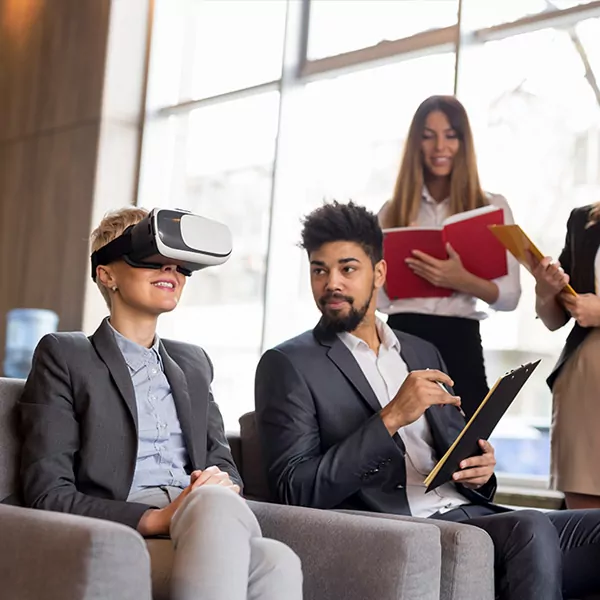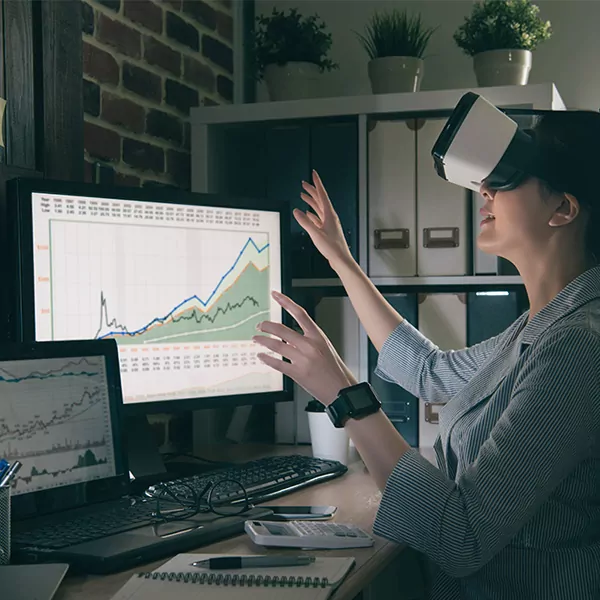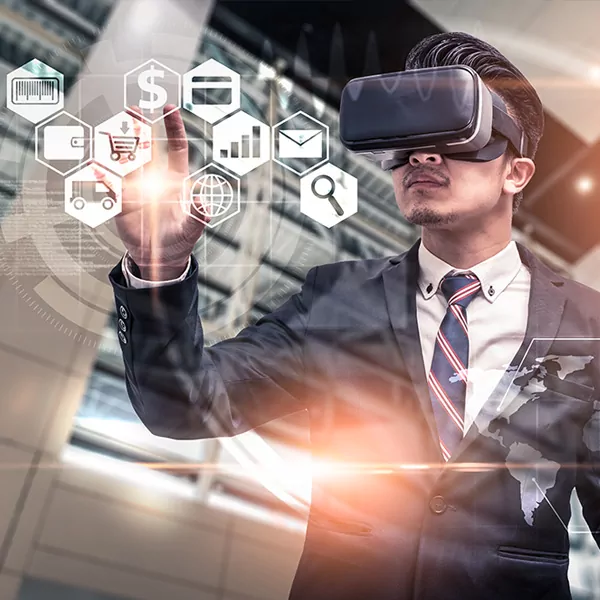In a fiercely competitive marketplace where differentiation and customer experience drive success, Extended Reality (XR) can help AEC firms gain a competitive advantage. XR can also help AEC firms deal with highly complex data that is notoriously difficult to collaborate on, especially in remote work environments. The AEC industry has many other potential use cases for utilizing XR technologies, including personalized safety training, safety management, progress tracking, labor management, defects management, energy savings, understanding end-users (occupants) preferences, and so on.
One exciting way XR technology can help AEC firms add differentiation to their offering is through the 3D visualization. By inviting clients to join them in an immersive virtual product demonstration, presenters can explore concepts and ideas in stunning ways that capture the imagination and secure confidence. Hosts are also able to walk their prospects through the virtual environment and explain each frame in real-time as the viewer enjoys a deep, immersive experience that traditional real-world models could never offer.
The enhanced collaboration capabilities offered by XR also resolve one of the biggest problems the AEC industry faces: delays. Research tells us over 98% of construction projects incur cost overruns and delays every year. The reason? A fundamental lack of communication between construction parties, a lack of visualization, and a lack of support for advanced communications technologies. By investing in XR, AEC firms can significantly reduce the high number of delays that are keeping them from meeting their goals.
Extended reality (XR) technology can help remove the cost of renting office space and travelling to different locations, it can also help AEC firms cut back on a number of expenses by virtualizing many business practices. With XR, AEC firms can significantly reduce risks in hazardous environments by simulating the construction in an immersive and controlled virtual environment. This experiential training allows companies to place employees in highly dangerous situations to gauge a realistic evaluation of how they respond.
AR offers plentiful benefits to the AEC industry. For example, Architects can bring their designs to life in ways that enable others to engage with projects before they’ve begun in earnest. Digital assets can be overlaid on physical spaces, showing how different designs would look in real-time – whether that’s the addition of a new interior wall or an alternative material for flooring.
VR technology can create real-time models that can give clear cost estimation. VR can improve construction safety and improve workers’ hazard recognition skills. Safety experts can train workers with different motion tracking systems, as input methods and achieve much better results than on-site safety training. These systems provide a significant positive learning experience.
The potential applications of MR in AEC are numerous. MR ensures everyone involved in executing a project plan remains on the same page throughout its entire lifecycle. By introducing MR into the process, AEC firms can immerse their workers in identical 3D visualizations, effectively eliminating confusions stemming from inconsistent 2D-to-3D imaginative projections.
Business Case / Discovery / Brain Storming / Concept Validation
Requirements / Prioritize Insights / Define Timelines / Project Costs
Research & Strategy / Conceptual Design / Wireframe / Storyboard High Fidelity Design
3D Modeling / Prototyping App Development Integrations / APIs Testing
QA Testing / User Testing / Optimization Documentation & Knowledge Transfer
Training / Ready for Launch / Support / Sign-off












